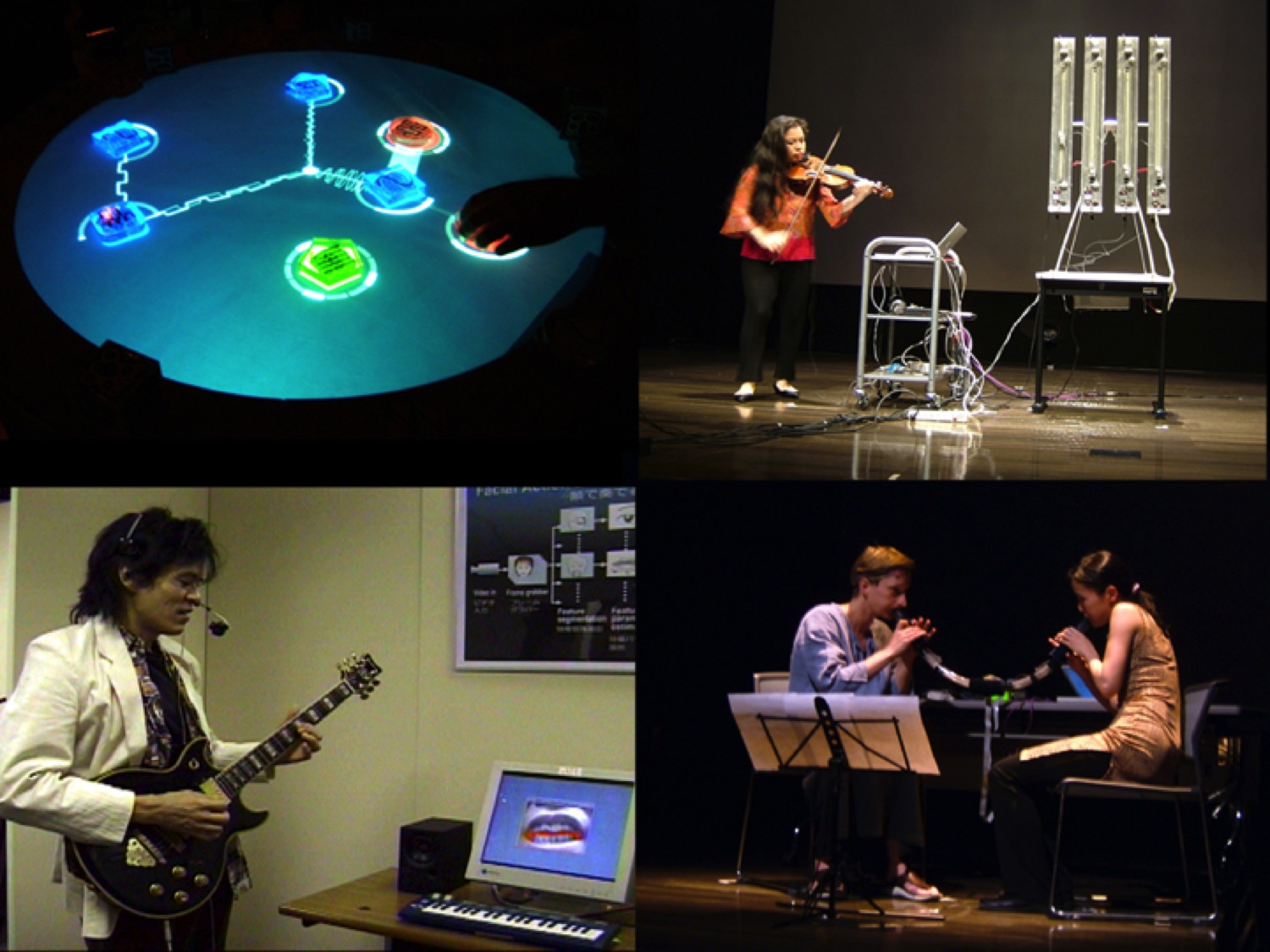Courses
|
FCFull Conference Pass (FC - All Days)
FC1Full Conference Pass (FC - 1-Day Only)
BCBasic Conference Pass
ExExhibits Only
ETElectronic Theater Ticket
RTReception Ticket
|

How to Design and Build New Musical Interfaces
Courses Information
Advances in digital audio technologies have led to a situation where computers play a role in most music production and performance. Digital technologies offer unprecedented opportunities for the creation and manipulation of sound, however the flexibility of these new technologies implies a confusing array of choices for musical composers and performers. Some artists have faced this challenge by using computers directly to create music however most would agree that the computer is not a musical instrument, in the same sense as traditional instruments, and it is natural to ask ``how to play the computer" using interface technology appropriate for human brains and bodies. In 2001, we organized the first workshop on New Interfaces for Musical Expression (NIME), as a two day workshop at CHI 2001, with the aim of answering this question by exploring connections with the better established field of human-computer interaction. That first workshop soon became an annual international conference, known as NIME, now considered to be one of the main academic conferences devoted to research on music technology. This course summarizes what has been learned by the new musical interface research community. We begin with an overview of the theory and practice of new musical interface design, asking what makes a good musical interface and whether there are any useful design principles or guidelines available. We will also discuss topics such as the mapping from human action to musical output, and control intimacy. Practical information about the tools for creating musical interfaces will be given, including an overview of sensors and microcontrollers, audio synthesis techniques, and communication protocols such as Open Sound Control (and MIDI). Many illustrative case studies are given, along with live demos which the students are invited to try. The course concludes with a practical design exercise.
Michael Lyons, Ritsumeikan University
Sidney Fels, University of British Columbia
Dr. Michael Lyons, Professor, Image Arts and Sciences, Ritsumeikan University. Ph.D. Physics, University of British Columbia. Michael has worked in computational neuroscience, pattern recognition, cognitive science, and interactive arts. He was a Research Fellow at Caltech (1992/3), and a Lecturer and Research Assistant Professor at the University of Southern California (1994/96). From 1996-2007 he was a Senior Research Scientist at the Advanced Telecommunications Research International Labs in Kyoto, Japan. He joined the new College of Image Arts and Sciences, Ritsumeikan University, as Full Professor, in 2007. Michael co-founded the New Interfaces for Musical Expression conference.
Dr. Sidney Fels, Professor, Electrical & Computer Engineering. Ph.D., Toronto. Sid has worked in HCI, neural networks, intelligent agents and interactive arts for over ten years. He was visiting researcher at ATR Media Integration & Communications Research Laboratories (1996/7). His multimedia interactive artwork, the Iamascope, was exhibited world-wide. Sid created Glove-TalkII that maps hand gestures to speech. He was co-chair of Graphics Interface â00. He leads the Human Communications Technology Laboratory and was Director of the Media and Graphics Interdisciplinary Centre (2001-2012). Sid co-founded the New Interfaces for Musical Expression conference.
Intended-Audience:
The course is intended to have a broad appeal to interaction designers, game designers, artists, and academic and industry researchers who have a general interest in interaction techniques for multi-modal sonic and musical expression.

